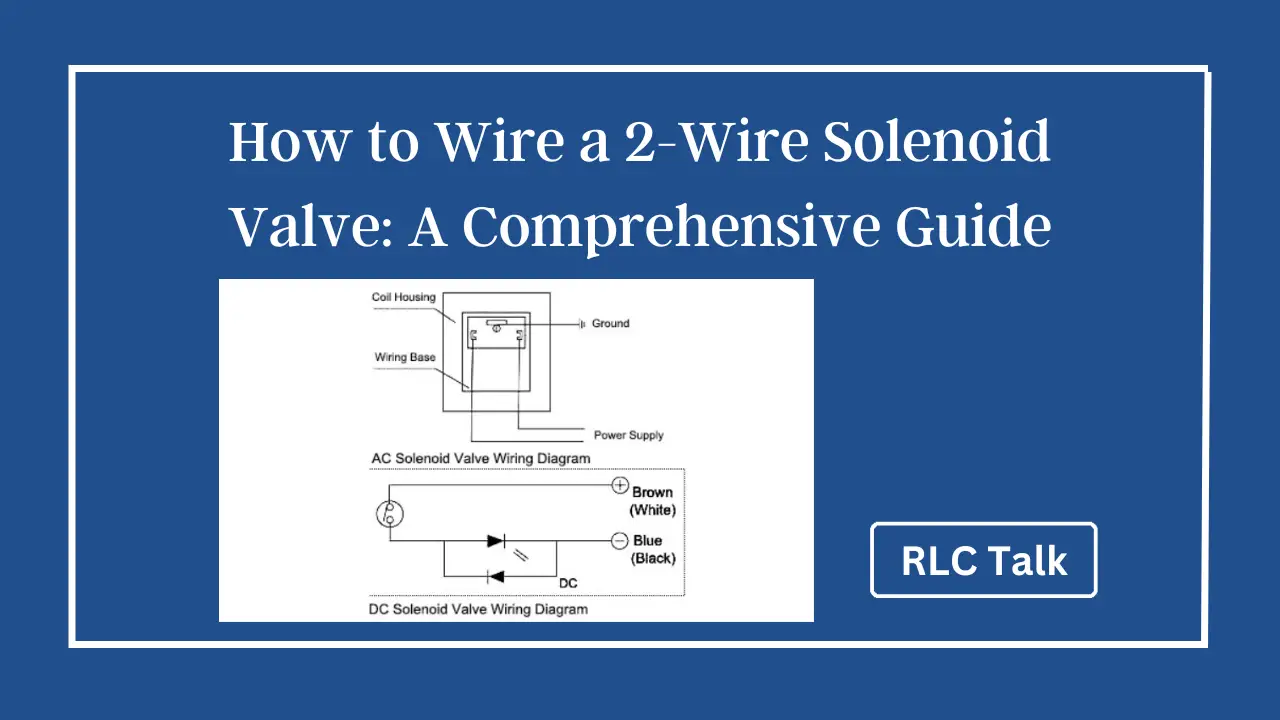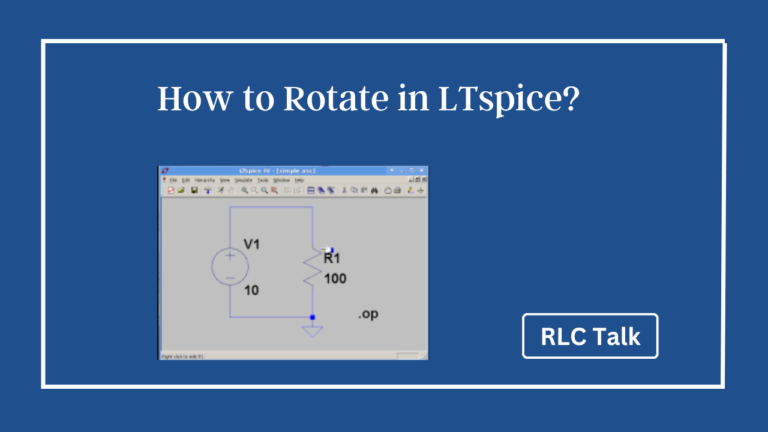How to Wire a 2-Wire Solenoid Valve: A Comprehensive Guide
Wiring a 2-wire solenoid valve involves connecting the power source to the common and power terminals of the valve. Ensure proper insulation, secure connections, and follow safety precautions. Testing and troubleshooting are crucial for verifying functionality. Seek professional help if needed.
Solenoid valves play a crucial role in various industrial and automation applications, precisely controlling the flow of liquids or gases. Among the different types available, the 2-wire solenoid valve stands out for its simplicity and efficiency.
In this article, we will explore the process of wiring a 2-wire solenoid valve, providing a step-by-step guide to ensure proper installation and operation.
Understanding the Basics of a 2-Wire Solenoid Valve

A 2-wire solenoid valve consists of essential components such as a solenoid coil, plunger, and valve body. When energized, the coil generates a magnetic field that attracts the plunger, allowing fluid to flow through the valve.
This type of valve is commonly used in applications where simplicity and cost-effectiveness are crucial factors. Its compact design and reliable operation suit various industries, including HVAC, irrigation, and automotive.
How to Wire a 2-Wire Solenoid Valve? Step by step
Gathering the Required Tools and Materials
Before you begin wiring the solenoid valve, ensure you have the necessary tools and materials. Some commonly required tools include wire strippers, pliers, screwdrivers, and a multimeter for testing purposes.
Additionally, ensure you have the appropriate gauge wires, connectors, and insulation materials based on the valve’s specifications and your installation requirements.
Can You Use Two Different Gauge Wires Together? Must Read
rlctalk.com
Step-by-Step Guide: Wiring a 2-Wire Solenoid Valve
- Safety Precautions and Power Supply Considerations
- Prioritize safety by disconnecting the power supply and wearing appropriate protective gear.
- Ensure the power source matches the valve’s voltage requirements to avoid damage or malfunction.
- Identifying the Valve’s Wiring Connections
- Examine the solenoid valve to locate the wiring terminals or connection points.
- Identify the common terminal (usually labeled as “C”) and the power terminal (often labeled as “P” or “+”).
- Connecting the Power Source to the Solenoid Valve
- Strip the insulation from the power supply wires and the valve’s wiring connections.
- Connect one wire from the power source to the common terminal and the other wire to the power terminal.
- Secure the connections by tightening the screws or using appropriate connectors.
- Proper Wiring Techniques and Best Practices
- Ensure the wires are routed neatly and free from any potential hazards or obstructions.
- Use wire connectors or soldering techniques for secure and reliable connections.
- Double-check the wiring connections to ensure they are correctly aligned and tightly fastened.
- Insulation and Protection Measures
- Insulate the wiring connections using electrical tape, heat shrink tubing, or suitable insulating materials.
- Place the wiring in conduit or cable management systems to protect it from environmental factors and mechanical damage.
- Verify that all exposed wires are properly insulated to prevent short circuits or electrical hazards.
Is there a positive and negative on a solenoid?
No, solenoids do not have a positive or negative polarity. They operate based on the principle of electromagnetic induction, where an electrical current is passed through the coil, creating a magnetic field that activates the solenoid’s mechanism. Polarity is not a factor in their operation.
Testing and Troubleshooting
After completing the wiring process, it is essential to test the solenoid valve to ensure proper functionality. Verify that the power supply is connected correctly, and there are no loose or faulty connections.
Use a multimeter to measure the voltage across the solenoid coil and check for any abnormal readings. If the valve does not operate as expected, recheck the wiring connections and consult the manufacturer’s instructions for troubleshooting tips.
Additional Tips and Considerations
To ensure the longevity and reliable operation of your 2-wire solenoid valve, consider the following tips:
- Regularly inspect and maintain the valve to prevent debris or contaminants from affecting its performance.
- Familiarize yourself with the valve’s specifications, such as voltage ratings and pressure limits, to ensure proper installation and operation.
- Suppose you encounter any difficulties during the wiring process or have concerns about the installation. In that case, it is recommended to seek assistance from a professional electrician or consult the manufacturer’s support team.
How do you test a 2-wire solenoid?
Testing a 2-wire solenoid involves a few steps to ensure proper functionality. Here’s a detailed guide on how to test a 2-wire solenoid:
- Disconnect Power: Before starting any testing, make sure to disconnect the power supply to the solenoid valve to prevent any accidents or damage.
- Check Continuity: Using a multimeter set to the continuity or resistance mode, check the continuity across the two terminals of the solenoid. Place the multimeter probes on the terminals and check for reading close to zero or a tone indicating continuity.
- Apply Power: Connect the power supply to the solenoid valve, ensuring the correct voltage and polarity. Activate the power source momentarily to energize the solenoid.
- Listen for Audible Click: While the solenoid is powered, listen for an audible click or mechanical movement from the solenoid valve. This indicates that the solenoid is functioning correctly.
- Measure Voltage: Using the multimeter set to the voltage mode, check the voltage across the terminals of the solenoid when it is energized. Ensure that the measured voltage matches the specified voltage for the solenoid.
- Check Valve Operation: If the solenoid controls a valve, observe the valve’s operation while the solenoid is energized. Verify that the valve opens or closes as intended.
- Repeat for De-energized State: Repeat the above steps for the de-energized state of the solenoid. Ensure that the solenoid deactivates properly, and there is no continuity across the terminals when power is disconnected.
Note: If any abnormalities or malfunctions are observed during the testing process, it is recommended to consult a professional or refer to the manufacturer’s documentation for further assistance and troubleshooting.
8/2 Or 8/3 Wire For Stove – What’s Best?
rlctalk.com
Conclusion
Wiring a 2-wire solenoid valve is a straightforward process that can be accomplished with the right tools, materials, and knowledge.
Following the step-by-step guide outlined in this article, you can ensure a successful installation and enjoy the benefits of a properly functioning solenoid valve. Remember to prioritize safety, adhere to best wiring practices, and consult professional help when needed.







